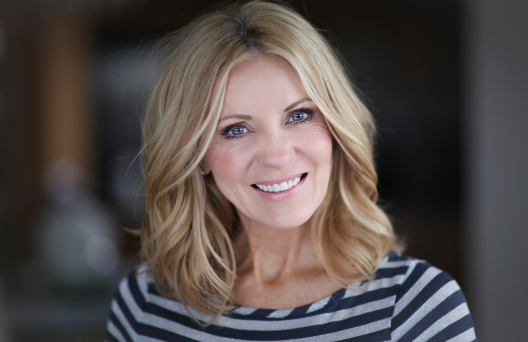
Featured Success Stories
 Laura & Fred
Laura & Fred
Age 62
Objective
To create a retirement income plan that enabled them to retire at 65, travel internationally, and help their grandkids save for college.
The Situation
Laura and Fred were toward the end of their successful careers. Their three kids were grown, married, and starting families of their own. Laura and Fred were ready for the next phase of their lives, but didn’t know exactly how to turn their retirement savings into consistent income after their stopped working. Plus, they were concerned about Social Security and paying taxes on distributions from their 401k plans. They wanted to travel the world, spend time with their growing family, and help their grandkids save for college costs.
The Strategy
Laura and Fred needed a comprehensive financial & retirement income plan. We started by reviewing their cash flow and spending needs. This included a comprehensive review of their spending over the last three months, and a projection of how their lifestyle would change once they retired. We incorporated additional travel throughout the year, and some monthly deposits into 529 accounts for the grandkids.
We then reviewed their Social Security benefits and healthcare situation. If Laura and Fred decided to retire before they turned 65 they’d need to obtain their own health insurance policies before enrolling in Medicare. We included these costs into their cash flow plan, and modeled out various Social Security filing timelines. While they’d maximize the value of their benefits by waiting to file until age 70, they decided to shoot for their full retirement ages (67) instead. Which would allow them to take less out of their retirement accounts each year.
As for their retirement account distributions, we modeled out several options. The first option was to take more money out of the accounts in the earlier years after retirement, before their mandatory distributions would begin at age 75. The second option minimized their distributions in the early years, only taking out what they needed to meet their living expenses. The third was a combination of the two, and utilized Roth IRA conversions to minimize the long term impact of their mandatory distributions and the resulting taxation.
Finally, we analyzed what a college education costs these days, and discussed what kind of assistance Laura and Fred really wanted to provide. Was it important for them to pay for 100% of the grandkids’ college costs? Was it important for the kids to have some of their own money at stake? How did the parents feel about this? We discussed the pros and cons of 529 accounts, education savings accounts, and taxable accounts in the kids’ names. Laura and Fred were then able to land on a monthly savings plan that checked all the important boxes.
The Results
Laura and Fred were very excited about their upcoming retirement. The planning process helped shed light on what cash flow would look like, including Social Security payments and quarterly distributions from their retirement accounts.
Thanks to the retirement projections and modeling we did they have confidence that their savings will last them the rest of their lives, their grandkids will have some college savings at their disposal, and they can live the lifestyle they want without worrying so much about money.
 Jason
Jason
Age: 43
Objective
Organize cash flows in a manner that supports personal and business needs.
The Situation
Jason's garden products company was successful by most any measure. Revenues and profits were growing, and even though he was reinvesting into new products & expansion initiatives, cash was still accumulating in his business accounts. So why did Jason feel like he was living paycheck to paycheck? He had very little cash in his household bank accounts, felt behind on his retirement and college savings, and even carried a balance on his credit cards. Jason had plenty of cash sitting in the business and was comfortable paying himself more. He needed a plan for taking it out in a tax conscious manner.
The Strategy
Jason's company was organized as an S-Corporation, which means that Jason takes a w-2 salary from the company in addition to profit distributions. Even though the business was making over half a million dollars each year, Jason was only paying himself $10,000 per month. This was barely enough to cover his family's monthly expenses, leading to his cash flow problems.
To start, we analyzed Jason's family's monthly spending needs by building a household profit and loss statement. We reviewed all the cash coming into and out of their household over the last three months, and advised them to target an emergency fund of $75,000 in cash on hand at all times. We then coordinated with Jason's CPA, and agreed that he should increase his salary to satisfy IRS reasonable compensation rules. It also was enough to cover their monthly household needs after taxes.
Then we discussed Jason's growth initiatives in more detail and reviewed the income statement and statement of cash flows for Jason's business. We agreed that three months' worth of operating expenses was a sufficient level of working capital to leave in the business, and added to that the total cost of upcoming equipment purchases needed for his expansion.
After setting aside business cash to cover three months' of operating expenses and his upcoming purchases, Jason still had more cash in the business than he needed. In order to avoid payroll taxes, Jason decided to take the money out as a profit distribution. He transferred the cash to his household bank account, and had enough to pay off his credit cards, fund his $75,000 emergency fund, and cut the balance of his HELOC in half.
The Results
Not only was Jason able to put an emergency fund together and knock down his debts, he now has more than enough cash coming into his household on a monthly basis. He and his wise are able to cover their expenses and contribute to retirement accounts and each of their kids' 529 college savings plans.
He also has a framework for handling business cash going forward. On top of the w-2 compensation he pays himself each month, he now has confidence surrounding how much cash the business needs to operate and grow. On a quarterly basis he reviews the business bank account balances and takes out anything in excess of the business's cash needs. Each time this happens he and his wife decide whether to contribute more to their investments, pad the kids' college savings accounts, or pay down debt faster.
 Ray and Linda
Ray and Linda
Ages: 65 & 63
Objective
Transition smoothly into retirement, minimize taxation on their savings, maximize the bequest to their kids & several charitable organizations.
The Situation
Ray was a partner in a successful real estate firm, and was approaching the retirement date specified in his buy/sell agreement. Ray was confident he had plenty of resources to fund a comfortable retirement, but he was very concerned about taxation. He’d accumulated substantial savings in the company 401(k) plan, and would trigger income streams from deferred compensation and deferred sales payments once he left. Ray and his wife Charlotte needed help reducing the tax bite, both now and in the future.
The Strategy
By virtue of Ray’s deferred compensation & deferred sales agreements he and Linda would remain in a very high tax bracket for a few years after Ray’s retirement. Since they sorely needed tax deductions in these years, we set up a donor advised fund. This allowed them to make contributions and claim substantial deductions in their high income / high tax bracket years, and then trigger distributions to their charities of choice later on.
Additionally, Ray & Linda held a large portion of their portfolio in taxable corporate bonds. Given that they’d likely remain in a high tax bracket for the foreseeable future, we replaced these holdings with municipal bonds that produced tax free interest. Since the municipal bonds had a similar credit rating this change maintained a similar risk exposure in their portfolio.
Ray & Linda also happened to live in a state with an estate tax threshold of $1 million per person ($2 million combined). Since Ray & Linda’s combined estate exceeded this amount by quite a bit, the state’s estate tax would take a large chunk from their kids’ inheritance. To reduce this liability we worked with Ray & Linda’s attorneys to set up a series of trusts. Ray & Linda then placed assets inside the trusts to shield the future growth of some of their investments from estate taxation.
The Results
On top of this, once Ray & Linda turned 72 they were required to begin distributing money from their retirement savings. We were able to direct these distributions to charitable causes via Qualified Charitable Distributions, which helped to reduce taxable income from that point forward.
Ray & Linda were never in doubt about their ability to retire. But with some thoughtful planning we were able to dramatically reduce the amount they’ll pay in taxes - now, throughout their retirement, and after their death.
 Amanda
Amanda
Age: 58
Objective
Convert her biggest asset into a retirement income stream while retaining job continuity for her employees and minimizing taxes on the sale of the business.
The Situation
Amanda had built her successful veterinary practice from the ground up. It was hard, but she grew the practice to a staff of 8, with enough cash flow to afford a very nice lifestyle. But the years had worn on Amanda. Stressors from the business started to layer on top of one another, and she soon realized she was losing the passion she had when she started the business two decades before. As the stress began to impact her health she knew she needed a change, but didn’t know where to start.
The Strategy
We started by exploring what was most important to Amanda and what she really wanted from her resources. While her love for animals never waned, her love for her career did. She realized that it was time to transition away from the business, but was concerned about her employees’ jobs if she sold to a competitor or private equity firm.
Once Amanda knew it was time for her to sell the business, we built a retirement plan that quantified exactly what she needed from the sale of her business to live comfortably for the rest of her life. This plan included distributions to support her need to travel and see family, as well as fund health insurance costs until she turned 65 and later once she enrolled in Medicare.
Since she had saved diligently in her practice’s 401k plan, we also mapped out an income plan that incorporated strategic Roth conversions. She’d be giving up an income stream by selling the practice, and would most likely fall into a lower tax bracket. That being the case, she had a great opportunity to convert her retirement savings to tax free Roth accounts, providing substantial long term tax savings.
The Results
We then worked with her attorney and CPA to clean up the business’s books, remove her personal expenses from the P&L, and prepare to put the practice on the market.
When the offers started to come in, an experienced private equity firm with national presence posted the highest initial bid. They were willing to secure the employees’ jobs for a short period of time, and Amanda proceeded to close the transaction several months later.
We put her investment and retirement plan to work, and set aside ample cash for Amanda to pay tax on the transaction. The rest was invested according to plan, and we continue to convert her retirement savings to Roth accounts in years Amanda remains in lower tax brackets.
Sign Up For Our Newsletter
Subscribe to our newsletter to receive blog posts, podcast episodes & other updates to help you optimize your income, reduce taxes and invest prudently.
"*" indicates required fields
 Jason
Jason Ray and Linda
Ray and Linda Amanda
Amanda